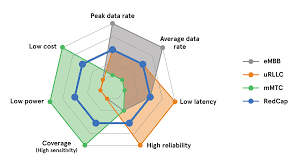How LTE Powers Fixed Wireless Access (FWA): A Comprehensive Overview
telcomatraining.com – In today’s fast-paced digital era, reliable internet connectivity is no longer a luxury—it is a necessity. Among the many technologies reshaping the internet landscape, Fixed Wireless Access (FWA) stands out as a transformative solution. Powered largely by Long Term Evolution (LTE) technology, FWA is providing broadband connectivity to areas where traditional wired networks struggle. In this article, we will explore how LTE powers FWA, why it matters, and what the future holds for this promising combination.
Understanding Fixed Wireless Access (FWA)
Fixed Wireless Access is a method of delivering broadband internet using wireless network technology rather than fixed lines such as fiber or copper. Instead of running cables to each household or business, FWA uses radio signals from a nearby base station to connect users via a fixed antenna or router installed at the premises. This approach dramatically reduces deployment costs and time, making it ideal for rural, suburban, and underserved urban areas.
Why LTE is Ideal for FWA
LTE, or Long Term Evolution, has become the cornerstone technology for modern mobile networks, offering high-speed data, low latency, and broad coverage. These characteristics also make LTE an ideal backbone for FWA solutions. Here’s why:
1. High Data Speeds
LTE networks are designed to provide impressive download and upload speeds. With advancements like LTE-Advanced and carrier aggregation, users can experience broadband-like speeds, making LTE-powered FWA a strong alternative to DSL or even some fiber networks.
2. Wide Coverage
LTE infrastructure is already widespread across many regions. Leveraging existing LTE towers for FWA reduces the need for additional investment in network deployment, ensuring a quicker and more cost-effective rollout.
3. Cost Efficiency
Traditional broadband services often require expensive digging and cabling. LTE-FWA minimizes these costs, especially in hard-to-reach locations. Operators can extend broadband services to customers without the heavy expenses associated with wired installations.
4. Flexibility and Scalability
LTE networks are highly scalable, allowing service providers to adjust capacity based on user demand. This flexibility is crucial for FWA deployments, particularly as user numbers and data consumption continue to grow rapidly.
Real-World Applications of LTE-Powered FWA
Across the globe, LTE-powered FWA is making a tangible difference. In rural America, for instance, operators are using LTE FWA to bridge the digital divide, offering high-speed internet to communities that previously relied on slow, unreliable services. Similarly, in parts of Africa and Southeast Asia, LTE-FWA solutions are empowering remote villages with access to online education, healthcare, and commerce, driving socioeconomic growth.
Businesses are also capitalizing on LTE-FWA. Enterprises in remote or temporary locations, such as construction sites, mining operations, and event venues, benefit from the quick deployment and reliable performance LTE-FWA offers, without waiting months for wired connections.
Challenges and Considerations
Despite its advantages, LTE-FWA faces certain challenges. Network congestion can occur if too many users access the same tower, potentially impacting performance. Weather conditions and physical obstructions can also affect signal quality. To mitigate these issues, service providers often deploy additional towers, use advanced antenna technologies, or transition users to 5G FWA solutions where available.
The Future: Transitioning from LTE to 5G FWA
While LTE has been instrumental in the rise of FWA, the future points towards 5G. 5G networks promise even higher speeds, ultra-low latency, and greater network capacity, further enhancing FWA capabilities. However, LTE will continue to play a critical role, especially in areas where 5G infrastructure is still being developed.
Many operators are adopting a hybrid approach, combining LTE and 5G technologies to maximize coverage and performance. In doing so, they ensure that no community is left behind in the race towards universal broadband access.
Conclusion
LTE-powered Fixed Wireless Access is revolutionizing how people connect to the internet, especially in areas where traditional broadband solutions fall short. Its blend of speed, flexibility, and cost-effectiveness makes it a powerful tool for closing the global connectivity gap. As technology evolves and 5G gains traction, LTE will remain a foundational pillar supporting the expansion of reliable, high-speed internet to every corner of the world.






